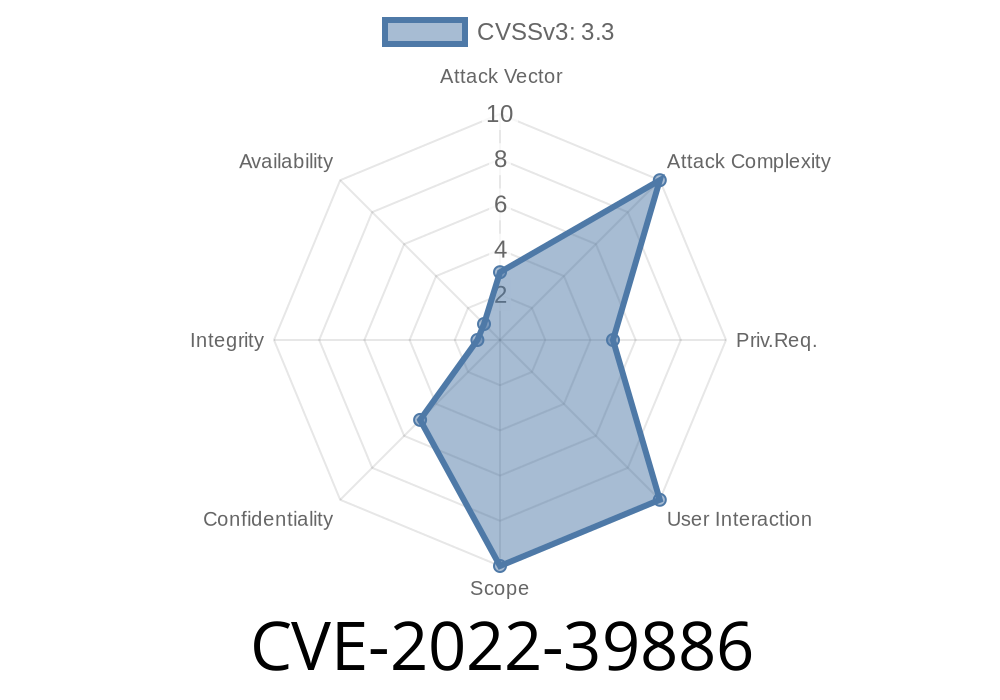In a world that is becoming more and more digitally connected, ensuring that our devices' security is up-to-date is critical in safeguarding against cyber threats. One such threat, known as CVE-2022-39886, revolves around an improper access control vulnerability in IpcRxServiceModeBigDataInfo, part of the Radio Interface Layer (RIL) prior to SMR Nov-2022 Release 1. This security loophole can potentially allow local attackers to gain unauthorized access to sensitive device information.
In this blog post, we will delve into an overview of the vulnerability, its implications, and how organizations can better protect themselves against this kind of risk. We'll also provide code snippets for better understanding and links to original references to further explore the subject matter.
Understanding the Vulnerability
IpcRxServiceModeBigDataInfo is a component of the RIL that is responsible for receiving and processing radio-related information on the device. The RIL is a crucial part of any mobile device as it facilitates communication between the device hardware and telecommunication networks.
The improper access control vulnerability (CVE-2022-39886) enables a local attacker to access sensitive device information by exploiting the security flaw in IpcRxServiceModeBigDataInfo. This information could include but is not limited to, data on physical locations, call logs, and messaging logs.
Here is a simple code snippet that demonstrates the security flaw in IpcRxServiceModeBigDataInfo
private void processIpcRxServiceModeBigDataInfo(SMLibrary.SsmRilRequestInfo ssmRilRequestInfo) {
// Access control check missing, leading to improper access control vulnerability
ServiceModeBigDataInfo bigDataInfo = ssmRilRequestInfo.getSmlib().getServiceModeBigDataInfo();
System.out.println("Received Big Data Info: " + bigDataInfo.toString());
}
Exploit Details
An attacker would typically exploit the vulnerability by writing a malicious application that targets and accesses the information in IpcRxServiceModeBigDataInfo without proper authorization. Alternatively, the attacker could also inject malicious code into an existing application running on the compromised device to achieve the same result.
In either case, the attacker gains access to otherwise protected information on the device, which could be used for various malicious purposes.
Fortunately, organizations can take steps to guard against this kind of vulnerability.
Mitigating the Risk
1. Update to SMR Nov-2022 Release 1 or later: The flawed version of RIL was addressed and fixed in subsequent releases. Updating to SMR Nov-2022 Release 1 or newer will ensure the vulnerability is no longer present.
2. Enforce least privilege access principles: Organizations should apply the concept of least privilege access to ensure that only authorized users and applications can access sensitive information.
3. Regularly monitor for signs of unauthorized access: Keep a close eye on logs and audit trails to detect any potential compromises or evidence of unauthorized data access.
4. Educate users about the dangers of installing apps from untrusted sources: Encourage users to download and install applications only from trusted sources such as the official app stores.
5. Have an incident response plan in place: Develop and maintain a well-documented incident response plan that outlines actions to take in case a security breach occurs.
For more information on the vulnerability, readers can refer to the following official sources
1. CVE-2022-39886 - National Vulnerability Database (NVD)
2. RIL Security Update - SMR Nov-2022 Release 1
Conclusion
As digital threats continue to evolve and target every aspect of our connected devices, it is crucial for organizations and users alike to stay informed and proactive in protecting their data and privacy. By understanding and addressing vulnerabilities such as CVE-2022-39886, we take a step forward in the ongoing battle against cybercriminals.
Timeline
Published on: 11/09/2022 22:15:00 UTC
Last modified on: 07/14/2023 17:17:00 UTC
